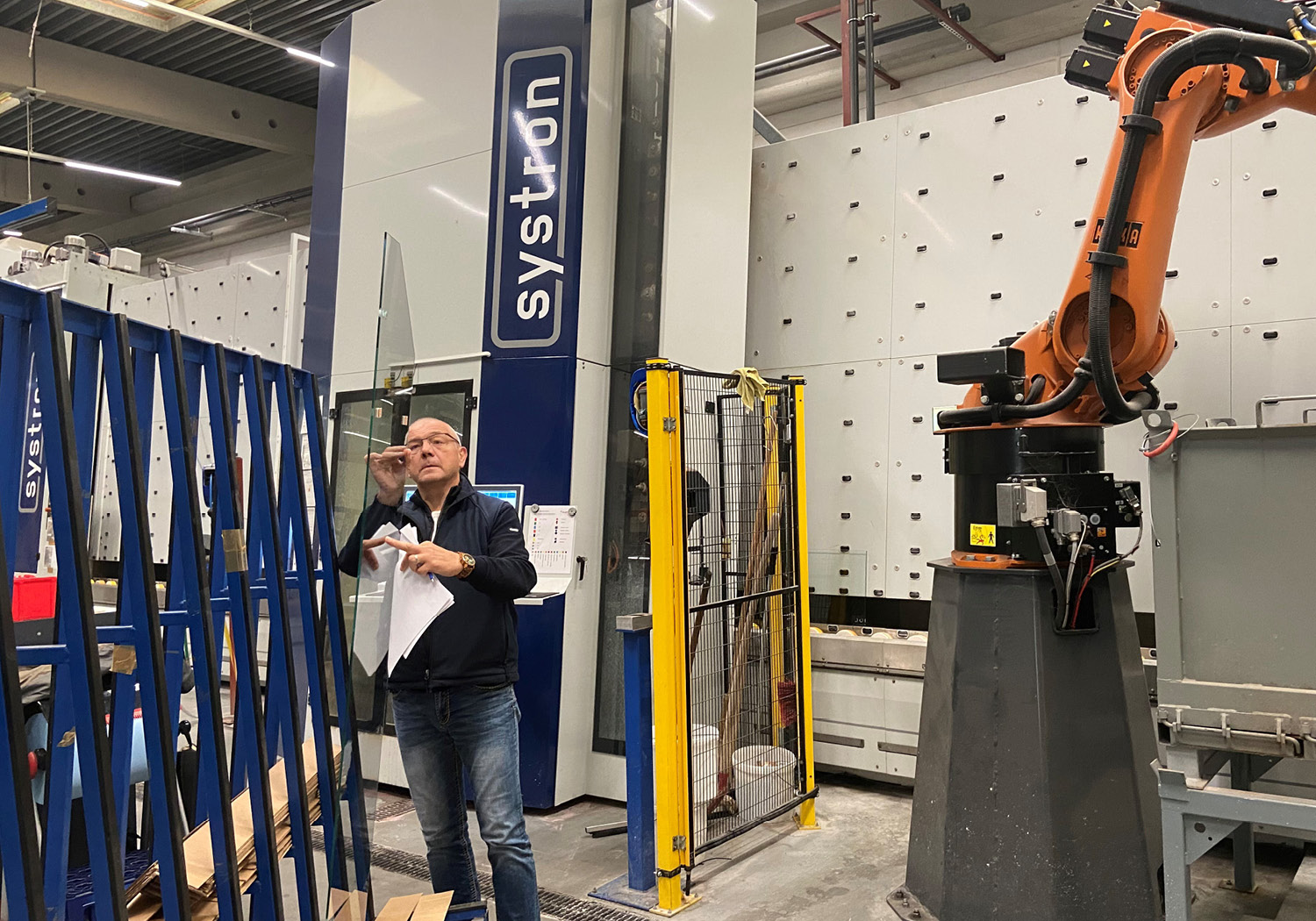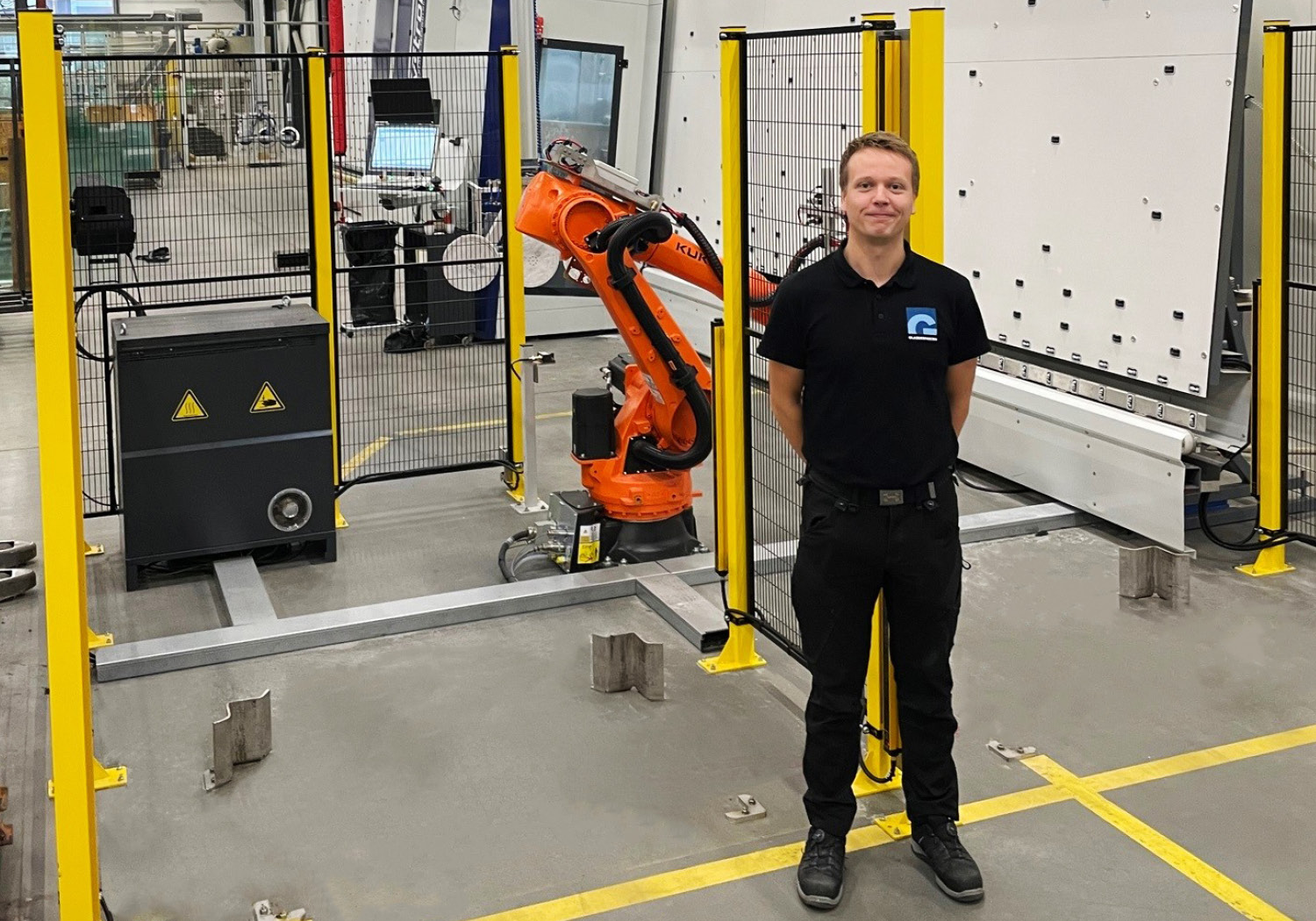Vertical glass processing and robot automation from a single source
The necessary reduction in cycle times, minimization of handling and the clearly noticeable shortage of skilled workers are increasingly moving the focus of the glass processing industry to automation. Systron, known for vertical high-level glass processing machines, leads these trends offering automated, versatile solutions.
One of the most popular automation option is the robot. It does not require a lot of space, increases quality thanks to the minimization of handling, reduces rejects and optimizes planning. Robot cells specially tailored to the requirements of the flat glass industry were developed for the automatic loading of systron processing machines.
There are three types to choose from:
- Individual solution with 2 pick-up stations for L-racks – resulting in minimal cycle times for high-speed seaming systems and glass dimensions up to 3.5 x 2.5m.
- Integrated unit in other systron automation Solutions such as L-rack, storage or harp rack solutions.
- Autonomous operation to removal of waterjet cut-outs.




